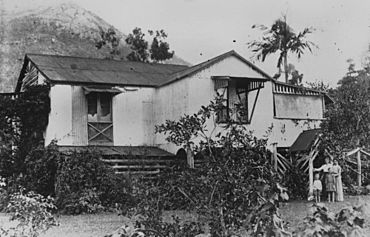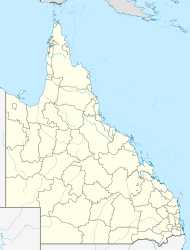Mount Jukes, Queensland facts for kids
Quick facts for kids Mount JukesQueensland |
|||||||||||||||
|---|---|---|---|---|---|---|---|---|---|---|---|---|---|---|---|

The house "Inglenook" with the mountain in the background, 1909
|
|||||||||||||||
| Population | 394 (2016 census) | ||||||||||||||
| • Density | 5.232/km2 (13.55/sq mi) | ||||||||||||||
| Postcode(s) | 4740 | ||||||||||||||
| Area | 75.3 km2 (29.1 sq mi) | ||||||||||||||
| Time zone | AEST (UTC+10:00) | ||||||||||||||
| LGA(s) | Mackay Region | ||||||||||||||
| State electorate(s) | Whitsunday | ||||||||||||||
| Federal Division(s) | Dawson | ||||||||||||||
|
|||||||||||||||
Mount Jukes is a mountain and a small community near the coast. It is located north of Mackay in Queensland, Australia. In 2016, about 394 people lived in the Mount Jukes area.
Contents
What is Mount Jukes Like?
Mount Jukes is a mountain that stands tall in the south-west part of the area. It is part of the Pioneer Peaks National Park. The mountain rises to 547 meters (about 1,795 feet) above the sea.
How the Mountain Formed
Mount Jukes is made of a type of rock called igneous rock. This rock formed from hot, melted rock deep inside the Earth. Over millions of years, wind and water have shaped the mountain. Scientists believe Mount Jukes was formed by volcanoes about 32 million years ago.
Unique Plants
A special type of plant grows on Mount Jukes. It is a shrub called the Mount Blackwood holly. This plant is very rare. You can only find it growing in the Mount Blackwood area, which includes Mount Jukes.
Getting to the Top
There is a gravel road that leads up Mount Jukes. However, this road is usually locked. This means you cannot easily drive to the top of the mountain.
How Did Mount Jukes Get Its Name?
Mount Jukes was named a long time ago, in 1862. It was named by a person called George Elphinstone Dalrymple. He named the mountain after a geologist named Joseph Beete Jukes.
Joseph Beete Jukes was a scientist who studied rocks and the Earth. He also worked as a naturalist. This means he studied nature during his travels. He explored the area on a ship called HMS Fly between 1842 and 1846.


